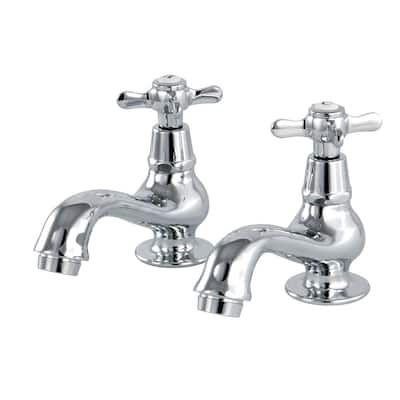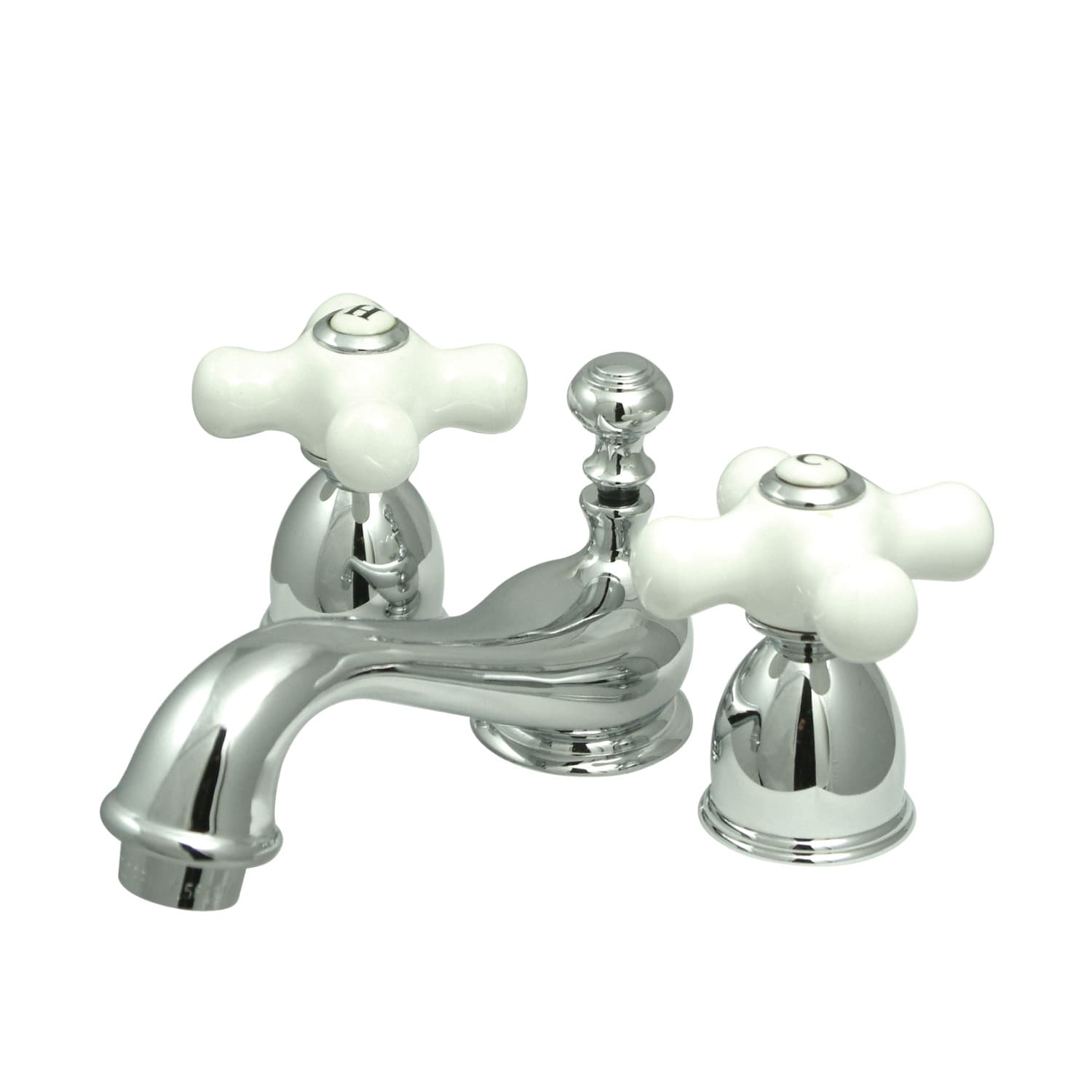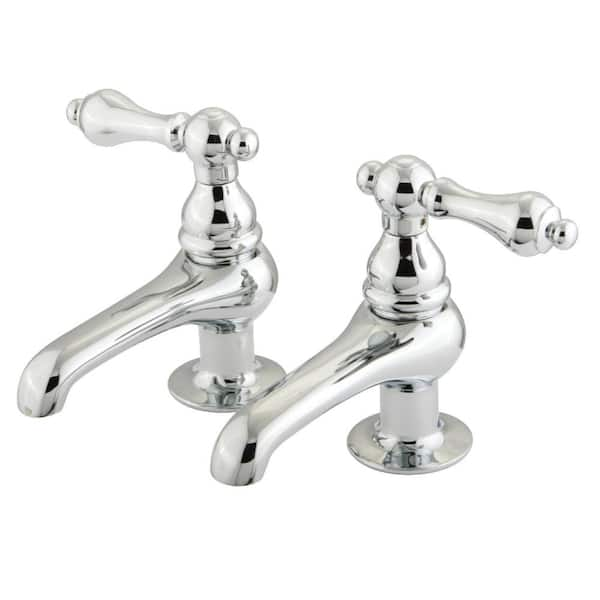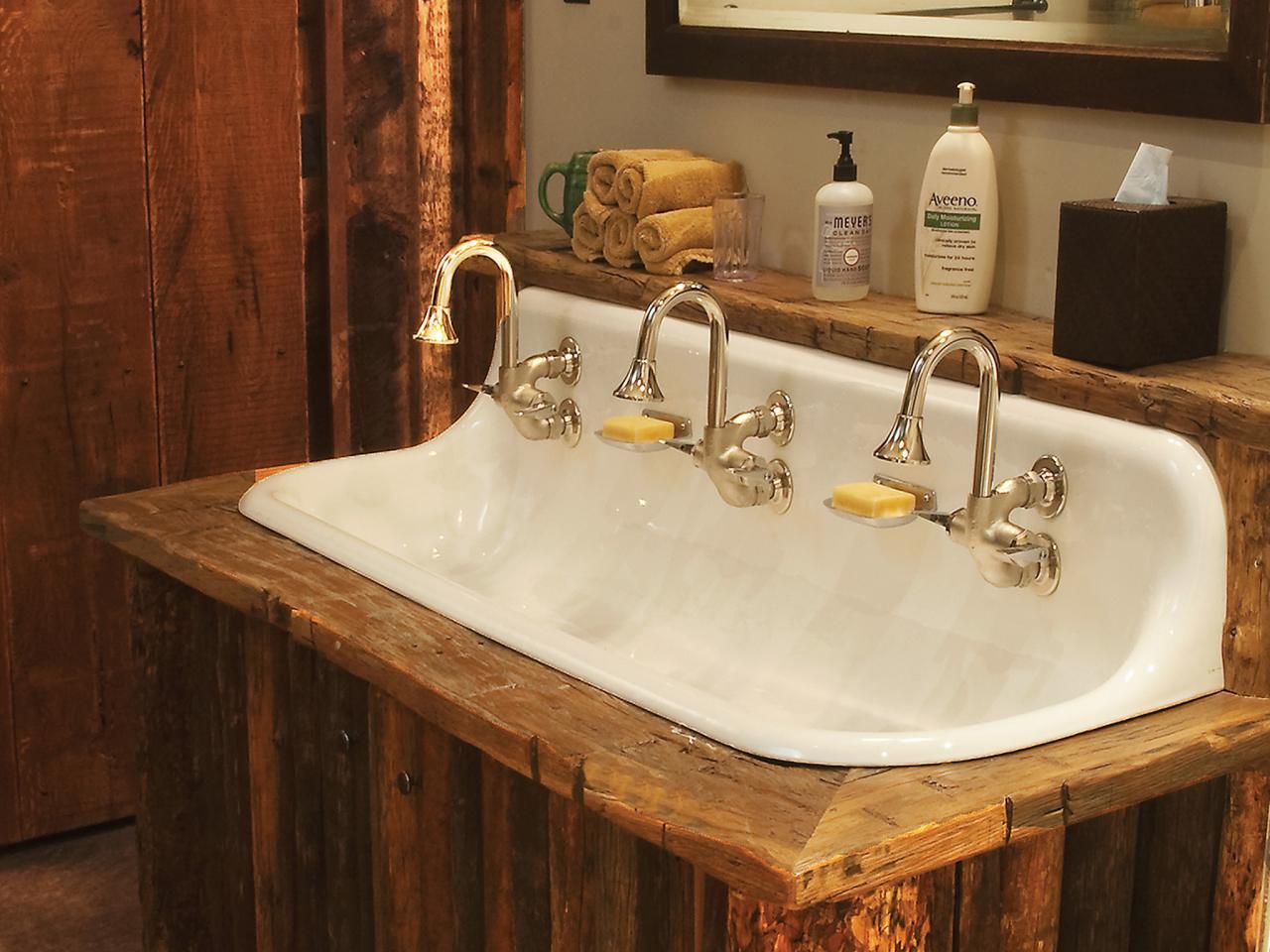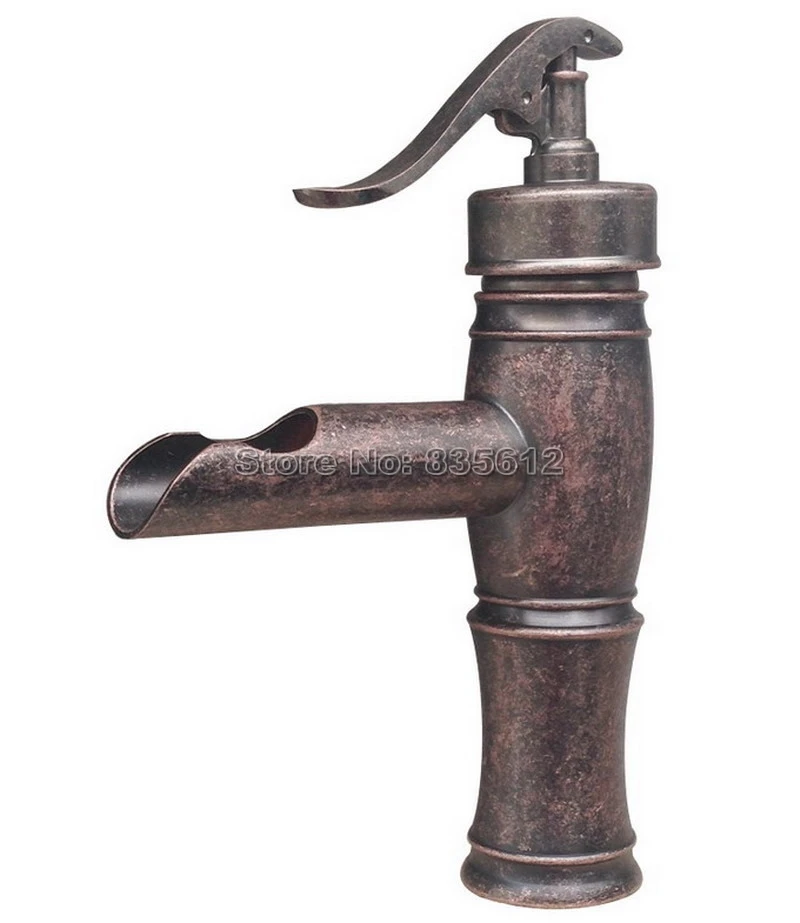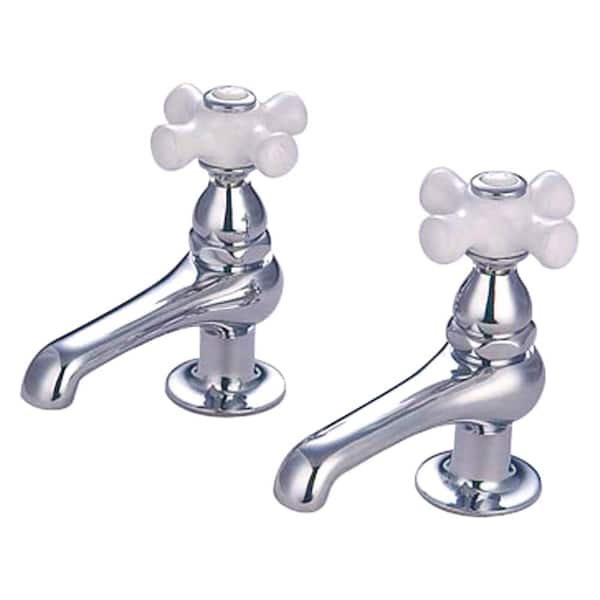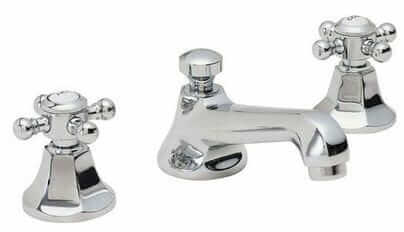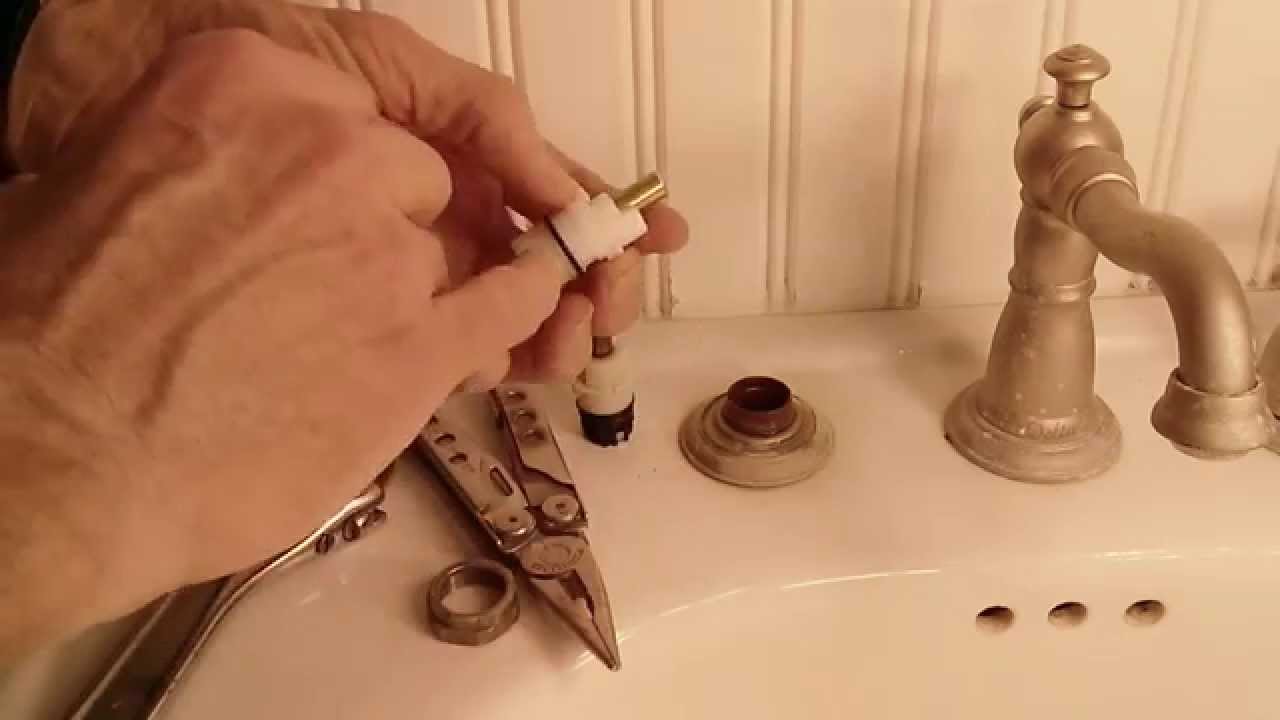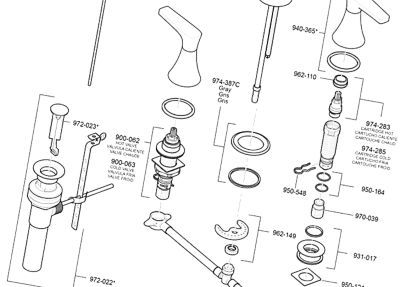Why Choose an Old-Fashioned Design
There’s something undeniably charming about old-fashioned bathroom faucets. They carry a sense of history and elegance that’s hard to replicate with modern designs. When I was renovating my bathroom, I knew I wanted to incorporate a vintage element, and choosing an old-fashioned faucet was the perfect way to do it. Here’s why opting for an old-fashioned design can be a great choice for your bathroom.
- Timeless Appeal One of the most compelling reasons to choose an old-fashioned faucet is its timeless appeal. Unlike trendy modern designs that may go out of style in a few years, vintage faucets have a classic look that has stood the test of time. Whether your bathroom has a traditional, rustic, or eclectic style, an old-fashioned faucet can seamlessly blend in while adding a touch of sophistication.
- Unique Character Old-fashioned faucets often have unique details that set them apart from their modern counterparts. From intricate engravings to distinctive spout shapes, these faucets are designed to be more than just functional—they’re pieces of art. I love the character that an old-fashioned faucet brings to a bathroom, turning an ordinary sink into a focal point. If you appreciate craftsmanship and attention to detail, a vintage faucet is a perfect choice.
- Eco-Friendly Choice Choosing an old-fashioned faucet, especially if you’re repurposing an authentic vintage piece, is an eco-friendly option. Instead of purchasing a brand-new faucet, you’re giving new life to a piece that might otherwise end up discarded. Plus, older faucets were often made with higher-quality materials that can last for decades with proper care, reducing the need for replacements and minimizing waste.
- Increased Home Value Incorporating vintage elements, like an old-fashioned faucet, into your bathroom design can increase your home’s value. Many buyers appreciate the charm and uniqueness of a home with character, and a well-chosen vintage faucet can be a selling point. It’s a small detail that can set your bathroom apart from others, making your home more attractive to potential buyers.
- Versatility in Design Despite their vintage origins, old-fashioned faucets are surprisingly versatile. They can be paired with a variety of sink styles, from pedestal sinks to farmhouse basins, and they work well with different countertop materials, such as marble, granite, or wood. Whether your bathroom is modern, traditional, or somewhere in between, an old-fashioned faucet can add a touch of elegance and charm without clashing with the overall design.
- A Personal Connection to the Past For me, one of the most meaningful aspects of choosing an old-fashioned faucet was the connection to the past. These faucets often have a story behind them, whether they were salvaged from a historic home or designed to replicate a bygone era. Installing a vintage faucet in your bathroom allows you to bring a piece of history into your home, creating a space that feels both personal and timeless.

Materials for Quality Vintage Faucets
When selecting an old-fashioned bathroom faucet, the materials used in its construction are crucial. Not all vintage faucets are created equal, and understanding the materials can help you choose a piece that not only looks beautiful but also stands the test of time. During my search for the perfect vintage faucet, I learned a lot about what makes a quality piece, and I’m excited to share these insights with you.
Solid Brass Construction One of the first things to look for in a quality vintage faucet is solid brass construction. Brass is a durable material that resists corrosion and has a substantial feel, which is why it’s been used in plumbing fixtures for centuries. Unlike faucets made from cheaper materials, a solid brass faucet will have a heft to it and can last for decades with proper care. When I found my brass faucet, I knew it would be a reliable and long-lasting addition to my bathroom.
Porcelain Accents Many old-fashioned faucets feature porcelain accents, such as handles or escutcheons, which add to their charm and authenticity. Porcelain is not only beautiful but also durable and easy to clean. However, it’s important to inspect these accents for any cracks or chips, as these can compromise the integrity of the faucet. I’ve found that well-maintained porcelain elements add a touch of elegance and can be a lovely contrast to the metal parts of the faucet.
High-Quality Finishes The finish on a vintage faucet is another critical factor to consider. Look for finishes like polished nickel, chrome, or oil-rubbed bronze, which are both durable and appropriate for vintage designs. A high-quality finish will resist tarnishing and wear, keeping your faucet looking beautiful for years to come. When choosing my faucet, I made sure to select one with a finish that matched the other hardware in my bathroom for a cohesive look.
Smooth Operation A quality vintage faucet should have smooth, precise operation, especially when it comes to the handles and spout. Test the faucet to ensure that the handles turn easily without any wobbling or sticking, and check that the spout moves smoothly if it’s designed to swivel. Poor operation can indicate worn-out internal parts, which might be difficult or expensive to replace. I always test faucets before committing to a purchase to ensure they function as well as they look.
Lead-Free Components Lead was commonly used in plumbing fixtures in the past, so it’s important to ensure that any vintage faucet you choose is lead-free, especially if it’s an authentic antique. Some older faucets may have been manufactured before lead regulations were in place, so be sure to ask the seller about the faucet’s lead content or have it tested if you’re unsure. Modern reproductions of vintage faucets are usually made to meet today’s safety standards, which is something to keep in mind if you’re concerned about lead.
Availability of Replacement Parts While vintage faucets are built to last, they may still require maintenance over time. It’s a good idea to choose a faucet for which replacement parts are readily available, especially if you’re considering an authentic antique. Check with the manufacturer or a reputable plumbing supplier to ensure that you can easily find parts like washers, cartridges, or handles. I always factor in the availability of parts when choosing a vintage faucet, as it can save me a lot of hassle down the line.
Styles: From Victorian Elegance to Rustic Simplicity
The world of old-fashioned bathroom faucets is rich with style options, each bringing its unique flair to your space. Whether you’re drawn to the intricate details of Victorian designs or the understated charm of rustic simplicity, there’s a vintage faucet style to suit every taste. When I was choosing my faucet, I spent a lot of time exploring different styles, and I’m excited to share what I’ve learned to help you find the perfect fit for your bathroom.
Victorian Elegance If you’re looking to create a bathroom with a touch of old-world charm, a Victorian-style faucet might be the perfect choice. These faucets are known for their ornate designs, with details like cross handles, intricate spouts, and elegant escutcheons. The Victorian style is all about luxury and sophistication, often featuring finishes like polished nickel or antique brass. When I considered a Victorian faucet for my bathroom, I was drawn to how it could instantly elevate the space, making it feel like a luxurious retreat.
Art Deco Glamour For those who love the glitz and glamour of the 1920s and 1930s, an Art Deco faucet could be a fantastic choice. Art Deco designs are characterized by bold geometric shapes, symmetrical lines, and a sense of opulence. These faucets often feature shiny finishes like chrome or polished nickel, which enhance their sleek, glamorous appeal. I found that an Art Deco faucet could bring a sense of drama and style to a bathroom, perfect for those who want to make a statement.
Industrial Chic The industrial style has become increasingly popular in recent years, and vintage faucets are a great way to bring this look into your bathroom. Industrial faucets are typically more utilitarian, with a focus on functionality and simplicity. They often feature exposed pipes, rugged materials like cast iron or aged brass, and a more minimalistic design. I love how industrial faucets can add a bit of edge to a bathroom, creating a space that feels both modern and timeless.
Rustic Simplicity If you prefer a more relaxed, cozy atmosphere in your bathroom, a rustic-style faucet might be just what you need. Rustic faucets often feature simpler designs, with a focus on natural materials and finishes like oil-rubbed bronze or weathered copper. These faucets can bring a warm, inviting feel to your bathroom, making it a space where you want to linger. When I was considering a rustic faucet, I was drawn to its ability to create a comforting, lived-in look that feels effortlessly charming.
Mid-Century Modern For fans of mid-century design, a faucet from the 1950s or 1960s might be the perfect addition to your bathroom. Mid-century modern faucets are characterized by clean lines, functional forms, and a minimalist aesthetic. They often feature simple lever handles and streamlined spouts, with finishes like chrome or brushed nickel. I found that a mid-century faucet could bring a sense of understated elegance to a bathroom, perfect for those who appreciate the beauty of simplicity.
Eclectic Mix If you can’t choose just one style, why not mix and match? An eclectic approach allows you to combine different styles to create a bathroom that’s uniquely yours. For example, you could pair a Victorian faucet with industrial lighting or a rustic faucet with Art Deco accessories. The key to making an eclectic style work is finding a common thread—such as color or finish—that ties everything together. I love the freedom that an eclectic approach offers, allowing me to create a space that reflects my personality and taste.
Where to Find Old-Fashioned Faucets
Finding the perfect old-fashioned faucet can be a rewarding experience, but it often requires a bit of patience and effort. Authentic vintage faucets, especially those in good condition, aren’t always easy to come by. However, there are several places where you can find these gems, whether you’re looking for an original piece or a high-quality reproduction. Here are some of the best sources I’ve discovered in my quest for the perfect faucet.
Antique Shops and Flea Markets One of the most exciting ways to find an authentic vintage faucet is by browsing antique shops and flea markets. These places are treasure troves for unique finds, and you never know what you might stumble upon. I’ve spent many weekends hunting for the perfect faucet at local antique shops, and the thrill of finding a beautiful piece that’s just right for my bathroom is hard to beat. The key is to visit these places regularly and keep an open mind—you might find the perfect faucet when you least expect it.
Online Marketplaces In today’s digital age, online marketplaces like eBay, Etsy, and Craigslist have become go-to sources for vintage and antique items. These platforms offer a wide range of old-fashioned faucets, from original antiques to high-quality reproductions. The advantage of shopping online is the vast selection and the ability to search for specific styles, materials, or finishes. When I was searching for my faucet, I found several great options online, but I made sure to ask the sellers plenty of questions about the condition and history of the pieces before making a purchase.
Architectural Salvage Yards Architectural salvage yards are another fantastic source for vintage faucets. These yards specialize in reclaiming materials from old buildings, including plumbing fixtures, and they often have a wide selection of vintage faucets. The pieces you’ll find here are usually authentic and have been salvaged from homes that were being renovated or demolished. I’ve found that salvage yards are a great place to find faucets with real history, and the staff is often knowledgeable and can help you find exactly what you’re looking for.
Specialty Plumbing Stores Some specialty plumbing stores focus on vintage and antique fixtures, offering both original pieces and high-quality reproductions. These stores often have a curated selection of faucets, making it easier to find a piece that fits your specific needs. I appreciate the expertise these stores offer, as the staff is usually well-versed in the history and care of vintage faucets. Shopping at a specialty store can be a bit more expensive, but the peace of mind of knowing you’re getting a quality piece can be worth the investment.
Estate Sales and Auctions Estate sales and auctions are other excellent venues for finding vintage faucets. These events often feature items from older homes, including bathroom fixtures that have been well-maintained over the years. I’ve had great luck finding unique faucets at estate sales, where you can sometimes score a deal if you’re willing to bid or negotiate. Keep an eye on local listings for estate sales and auctions, and be prepared to act quickly if you find something you love.
Reputable Reproduction Manufacturers If you’re having trouble finding an authentic vintage faucet, or if you’re concerned about lead content and plumbing compatibility, consider purchasing a high-quality reproduction. Many manufacturers specialize in creating new faucets that replicate the look and feel of old-fashioned designs, but with modern safety and plumbing standards. I’ve found that these reproductions can be an excellent option, offering the charm of a vintage faucet with the reliability of a new one.
Adapting Vintage Faucets to Modern Plumbing
Installing an old-fashioned faucet in a modern bathroom can be a bit more complex than a standard installation. Vintage faucets often have different dimensions and fittings compared to today’s plumbing standards and making the necessary adaptations requires some careful planning. When I installed my vintage faucet, I had to navigate a few challenges, but with the right approach, the process can be smooth and rewarding. Here’s what you need to know about installing a vintage faucet in a modern bathroom.
Assessing Compatibility The first step in installing a vintage faucet is assessing its compatibility with your existing plumbing. Vintage faucets were designed for different plumbing systems, so their connections may not align with modern pipes. Before purchasing a faucet, I recommend measuring the distance between the faucet’s inlets and comparing it to your sink’s current setup. You may need to use adapters or modify your plumbing to accommodate the faucet, but knowing what’s required beforehand can save you time and frustration.
Choosing the Right Sink The sink you pair with your vintage faucet can impact the installation process. Many old-fashioned faucets are designed for specific sink types, such as wall-mounted sinks or pedestal basins. If your faucet has a unique mounting style, you may need to choose a sink that complements it. When I was selecting a sink for my faucet, I made sure to choose one that allowed for easy installation while maintaining the vintage aesthetic I wanted.
Adapting the Plumbing In some cases, adapting your plumbing to fit a vintage faucet may be necessary. This could involve installing new supply lines, using compression fittings, or even relocating the plumbing to match the faucet’s dimensions. If you’re not comfortable with plumbing work, I recommend hiring a professional plumber who has experience with vintage fixtures. When I was adapting my plumbing, I found that working with a knowledgeable plumber made the process much easier and ensured that the faucet was installed correctly.
Dealing with Lead Concerns Lead content is a significant concern when installing a vintage faucet, especially if it’s an authentic antique. Many older faucets were made before lead regulations were in place, so it’s crucial to have the faucet tested or ensure that it has been refurbished to meet modern safety standards. If you’re unsure about the lead content, consider using a lead-reducing filter or replacing the faucet with a reproduction that meets today’s regulations. I always prioritize safety when installing vintage fixtures, as it’s essential to protect my family’s health.
Ensuring a Proper Seal One of the challenges I encountered when installing my vintage faucet was ensuring a proper seal between the faucet and the sink. Vintage faucets may have different gasket sizes or require unique sealing methods to prevent leaks. Using plumber’s putty or silicone sealant can help create a watertight seal, but it’s important to follow the faucet manufacturer’s recommendations. If the faucet doesn’t come with installation instructions, I suggest consulting a professional or doing thorough research to avoid any issues.
Testing and Final Adjustments Once the faucet is installed, it’s essential to test it thoroughly to ensure everything is working correctly. Check for leaks around the connections, make sure the water flows smoothly, and verify that the handles operate without any issues. If you encounter any problems, it’s better to address them immediately rather than risk damage to your bathroom. I always take the time to double-check my work, as a well-installed faucet can provide years of reliable service and enjoyment.
Maintenance Tips
Maintaining an old-fashioned bathroom faucet requires a bit more care than modern fixtures, but the effort is well worth it to preserve its beauty and functionality. Vintage faucets, especially those made from quality materials, can last for decades if properly maintained. I’ve learned a lot about how to keep my vintage faucet in top shape, and I’m happy to share these tips with you to help you do the same.
Regular Cleaning Keeping your vintage faucet clean is crucial to maintaining its appearance and preventing damage. Use a mild soap and water solution to clean the faucet regularly, and avoid harsh chemicals or abrasive cleaners that can damage the finish. I’ve found that a soft cloth or sponge works best for wiping down the faucet, and a toothbrush can be handy for getting into crevices. After cleaning, I always dry the faucet with a soft towel to prevent water spots and mineral buildup.
Polishing the Finish Polishing your vintage faucet is a great way to keep it looking shiny and new. Depending on the faucet’s finish, you may need to use a specific polish designed for brass, chrome, or other materials. I usually polish my faucet every few months or whenever I notice it starting to look dull. Be sure to follow the manufacturer’s instructions for the polish, and test it on a small, inconspicuous area before applying it to the entire faucet to ensure it doesn’t damage the finish.
Addressing Leaks Promptly Leaks can be a common issue with vintage faucets, especially if the internal parts are worn or if the faucet wasn’t installed correctly. It’s important to address leaks as soon as they occur to prevent water damage and prolong the life of your faucet. In my experience, replacing worn washers or O-rings can often solve the problem, but if the leak persists, it may be time to consult a professional. Regularly inspecting the faucet for leaks and fixing them promptly is key to keeping your faucet in good working condition.
Preventing Mineral Buildup Hard water can cause mineral buildup on your faucet, which can affect both its appearance and functionality. To prevent this, I recommend wiping down the faucet after each use and periodically using a vinegar solution to remove any mineral deposits. Soaking a cloth in vinegar and wrapping it around the faucet for a few minutes can help dissolve stubborn buildup. Be sure to rinse the faucet thoroughly after using vinegar to avoid damaging the finish.
Lubricating Moving Parts Over time, the moving parts of a vintage faucet, such as handles and spouts, can become stiff or difficult to operate. Applying a small amount of plumber’s grease or silicone lubricant to these parts can help them move smoothly. I usually lubricate my faucet’s moving parts once a year or whenever I notice any resistance. This simple maintenance step can extend the life of the faucet and make it more enjoyable to use.
Inspecting for Wear and Tear Regularly inspecting your vintage faucet for signs of wear and tear is essential to catch any issues early. Check for cracks, corrosion, or loose parts, and address any problems immediately. In my experience, a small issue like a loose handle can quickly turn into a bigger problem if left unaddressed. By keeping a close eye on your faucet’s condition, you can ensure it remains in top shape for years to come.
Complementing Your Faucet with Vintage Accessories
Your old-fashioned faucet is a beautiful centerpiece, but why stop there? Enhancing your bathroom decor with vintage accessories can create a cohesive and charming space that feels like a step back in time. When I was decorating my bathroom, I found that adding the right accessories made all the difference in creating a warm, inviting atmosphere. Here are some ideas to help you complement your vintage faucet with other period-appropriate decor.
Vintage Lighting Fixtures One of the easiest ways to enhance your bathroom’s vintage charm is by incorporating vintage lighting fixtures. Sconces, chandeliers, or pendant lights with antique finishes like brass or bronze can add a warm, nostalgic glow to the space. When I was choosing lighting for my bathroom, I opted for fixtures with frosted glass shades and intricate metalwork to complement the old-fashioned faucet. The right lighting can make your bathroom feel cozy and inviting, while also highlighting the beauty of your faucet.
Classic Mirrors A vintage-style mirror can be a stunning focal point in your bathroom and perfectly complement your old-fashioned faucet. Look for mirrors with ornate frames, beveled edges, or even a bit of patina for an authentic vintage feel. When I was selecting a mirror for my bathroom, I chose one with a gold-leaf frame that added a touch of elegance and tied together the overall design. A well-chosen mirror can reflect the beauty of your faucet and make the space feel more spacious and luxurious.
Period-Appropriate Hardware Don’t overlook the impact of smaller details like towel bars, drawer pulls, and hooks. Choosing hardware with a vintage design can reinforce the overall theme and create a cohesive look. I found that swapping out modern hardware for pieces with a patina finish or intricate detailing made a big difference in the feel of my bathroom. Look for hardware that complements the finish of your faucet, whether it’s polished nickel, oil-rubbed bronze, or aged brass.
Antique Storage Solutions Vintage-style storage solutions, like a clawfoot tub caddy, a wooden towel ladder, or a wire basket, can add both function and charm to your bathroom. These accessories not only provide practical storage but also enhance the vintage aesthetic. I incorporated a vintage apothecary cabinet into my bathroom for storing toiletries and towels, and it added a lovely touch of history to the space. Functional pieces that also serve as decor can help maintain the balance between style and practicality.
Textiles with a Vintage Touch The right textiles can bring warmth and softness to your bathroom while complementing the vintage theme. Consider adding plush, embroidered towels, a lace shower curtain, or a vintage-inspired bath mat to complete the look. I chose linens with delicate details and muted colors that matched the overall palette of my bathroom. These small touches can make your bathroom feel like a cozy retreat, inviting you to relax and unwind.
Decorative Accents Finally, don’t forget to add decorative accents that reflect the vintage style you’re aiming for. Antique perfume bottles, vintage soap dishes, or a collection of old-fashioned apothecary jars can add character and interest to your bathroom. I love the way these little details can personalize the space and make it feel uniquely yours. Displaying a few carefully chosen vintage items can create a sense of nostalgia and tie the whole room together.
Vintage Old-Fashion Basin Tap 4 in. Centerset 2-Handle Bathroom Faucet in Chrome
Bathroom faucets with vintage style from California Faucets
Bathroom Sink Faucet Antique Brass with Pop up Drain with Overflow Double Cross Handle Single Hole Deck Mount Vanity Basin Cold Hot Lavatory Mixer Tap
Kingston Brass KB1603PL 4 in. Centerset Bathroom Faucet, Antique Brass,4-Inch Center
Related Posts:
- Bathroom Faucets Separate Hot And Cold
- Rozinsanitary Bathroom Faucet Reviews
- How To Install Single Handle Bathroom Faucet
- Parts For Bathroom Faucet
- Delta Bathroom Faucet Aerator Removal Tool
- Kohler Bathroom Faucet Repair Parts
- Delta Single Handle Bathroom Faucet Parts
- Automatic Bathroom Faucets Home
- Delta Single Handle Bathroom Faucet Cartridge
- Delta Two Handle Bathroom Faucet Parts

